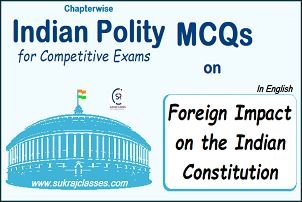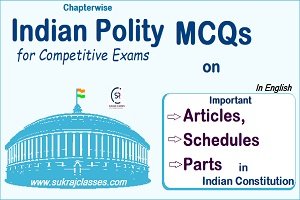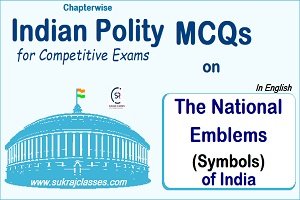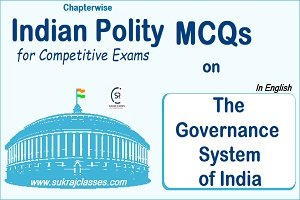
Indian Polity MCQs on Foreign Impact on the Indian Constitution
Que- 16. Indian Constitution has taken a certain feature of the Constitution of other countries, which country has contributed to the framing of the ‘Directive Principles of State Policy’?
(A) France
(B) Ireland
(C) Japan
(D) U.S.A.
Que- 17. The concept of Fundamental Duties has been taken from __?
(A) American Constitution
(B) British Constitution
(C) Russian (Former Soviet Union) Constitution
(D) French Constitution
Que- 18. Of the following political features, which is/are common to India and the USA?
1. Residuary powers vested in the centre.
2. Residuary powers vested in the states.
3. President has the power of pocket veto.
4. The upper house has some nominated members.
(A) Only 3
(B) Only 3 and 4
(C) Only 2, 3 and 4
(D) Only 1, 3 and 4
Que- 19. Match List-I with List-II and select the correct answer using the code given below.
List-I (Feature of Constitution of India)
(a) Fundamental Rights
(b) Parliamentary System
(c) Emergency Provisions
(d) Directive Principles of State Policy
List-II (Borrowed from which country)
1. United Kingdom
2. United States
3. Ireland
4. Germany
5. Canada
Codes:
(a) (b) (c) (d)
(A) 2 4 5 1
(B) 5 1 3 4
(C) 2 1 4 3
(D) 1 2 4 3
Que- 20. Match List-I with List-II and select the correct answer using the code given below.
List-I (Constitutional Provisions)
(a) Rule of Law
(b) Procedure established by Law
(c) Reserving of bill by Governor for President’s consideration
(d) Concurrent List
List-II (Sources)
1. Australia
2. England
3. Japan
4. Canada
Codes:
(a) (b) (c) (d)
(A) 1 2 3 4
(B) 2 1 4 3
(C) 3 2 1 4
(D) 2 3 4 1
Que- 21. Match List-I with List-II and select the correct answer using the code given below.
List-I (Constitutional Provision)
(a) Fundamental Rights
(b) Directive Principles of State Policy
(c) Cabinet Government
(d) Union State Relations
List-II (Source)
1. British Constitution
2. Canadian Constitution
3. Irish Constitution
4. U.S. Bill of Rights
Codes:
(a) (b) (c) (d)
(A) 4 3 2 1
(B) 4 2 3 1
(C) 4 1 3 2
(D) 4 3 1 2
Que- 22. Match List-I with List-II and select the correct answer using the code given below.
List-I
(a) Directive Principles of State Policy
(b) Fundamental Rights
(c) Concurrent List for Union-State Relations
(d) India as a Union of States with greater powers to the Union
List-II (Country from which it was derived)
1. Australia
2. Canada
3. Ireland
4. United Kingdom
5. United States of America
Code
(a) (b) (c) (d)
(A) 5 4 1 2
(B) 3 5 2 1
(C) 5 4 2 1
(D) 3 5 1 2
Que- 23. Given below are two statements.
Assertion (E): The Constitution of India has become the longest one.
Reason (R): The chapter on Fundamental Rights has been borrowed from the model of American Constitution.
Choose the correct answer using the code given below.
Codes:
(A) Both (E) and (R) are true and (R) is the correct explanation of (E)
(B) Both (E) and (R) are true, but (R) is not the correct explanation of (E)
(C) (E) is true, but (R) is false
(D) (E) is false, but (R) is true
Que- 24. Given below are two statements.
Assertion (E): The scope of judicial review is limited in India.
Reason (R): Indian Constitution has some borrowed items.
Select the right answer from the code given below.
Codes:
(A) Both (E) and (R) are true and (R) is the correct explanation of (E)
(B) Both (E) and (R) are true, but (R) is not the correct explanation of (E)
(C) (E) is true, but (R) is false
(D) (E) is false, but (R) is true





